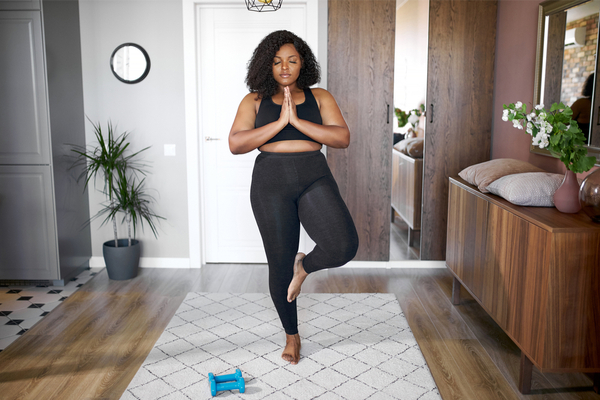
Can exercise help reduce your period pain?
Do you experience painful period cramps? You aren’t alone. Up to 91% of women who are of reproductive age experience period pain. Menstrual pain can significantly impact your quality of life by causing you to miss school or work, and can be linked to around nine days of lost productivity every year for women.
In addition, this pain can even cause anxiety and depression on top of the other uncomfortable symptoms that you may experience. Although exercise may be the last thing on your mind when you’re going through this painful monthly occurrence, research indicates that exercise can be an effective way to manage the pain.
Before we discuss the effectiveness of exercise on period pain, let’s talk about the different types of menstrual pain.
What are the different types of menstrual pain?
Pain during your menstrual cycle, known as dysmenorrhea, is commonly divided into two categories which are known as primary and secondary dysmenorrhea. These categories are based on the bodily processes associated with the pain.
Primary dysmenorrhea is when there is menstrual pain without an associated disease. This pain usually occurs when your menstrual flow begins and is commonly experienced at your lower pelvis or abdomen.
The pain may last between 8 to 72 hours and can be paired with other symptoms such as back and thigh pain, headache, diarrhea, nausea, and vomiting.
Secondary dysmenorrhea is when there is menstrual pain with an identifiable associated disease. Some common causes of secondary dysmenorrhea include endometriosis, adenomyosis, fibroids, pelvic inflammatory disease, or the use of an intrauterine contraceptive device.
This article will focus on the exercise for the management of primary dysmenorrhea.
How does exercise help to reduce period pain?
There has been considerable research in determining which treatments may be effective in reducing period pain. Exercise has been investigated as a treatment for primary menstrual pain due to its known health benefits and low risk for the general population.
Low intensity exercise, such as walking, helps to reduce stress hormones. Moderate to high intensity exercise, such as running, can lead to a reduction of inflammation in the body. Therefore, any intensity of exercise has the potential to assist in the conservative management of menstrual pain.
What type of exercise can help manage your period pain?
The evidence suggests that both low-intensity exercises, like yoga, stretching, or core-strengthening, and high intensity-exercises, like Zumba or high-intensity aerobic training, can be effective at reducing menstrual pain.
With this being said, a variety of different exercises can appropriately treat period pain, so it is up to personal preference, symptoms, and your current mood to decide which type of aerobic exercise you choose to manage your period pain.

How often should you be exercising to reduce your period pain?
These exercises should be performed for 45 to 60 minutes three times a week and consistently performed every week in order to reduce the intensity of menstrual pain. Research suggests that there can be about a 25% reduction in menstrual pain by following these exercise guidelines.
However, it’s important to note that exercise is not something that is one-size-fits-all. Remember to perform movement at a frequency and length that feels right to you and your individual health needs.
What is the benefit of choosing exercise over other treatments for period pain management?
To manage your menstrual pain, the exercises may be performed alone or in conjunction with other typical treatments, such as over the counter (OTC) non-steroidal anti-inflammatory drugs (NSAIDs) including ibuprofen or paracetamol/acetaminophen, or with the application of heat or sufficient rest as needed.
Like many medical treatments, taking NSAIDs could be costly and may have some negative side effects. Therefore, exercising may be an effective, affordable, and accessible drug-free treatment for menstrual pain. As always, talk to your health care provider before starting any new medication or treatment to determine if it’s right for you.
A pelvic health physiotherapist can provide you with an individualized treatment plan to help reduce pain or discomfort associated with your period cramps. To find a qualified pelvic health physiotherapist near you, visit our locations page or book an appointment online.
This blog was written by Anna Zheng, a Physiotherapy student at The University of Toronto



